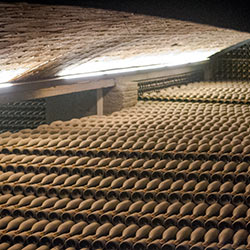 Cava is Spain’s very well-known sparkling wine but unlike sparkling wines from Champagne or Prosecco (to which it is often compared) the appellation of DO Cava is much more about a process rather than a region. While 95% of grapes for Cava come from the Catalan region of Penedés, it is also possible to source grapes from several other regions in Spain including Aragon, Castilla y León, Extremadura, La Rioja, Pais Vasco, Navarre, and Valencia.
Cava is Spain’s very well-known sparkling wine but unlike sparkling wines from Champagne or Prosecco (to which it is often compared) the appellation of DO Cava is much more about a process rather than a region. While 95% of grapes for Cava come from the Catalan region of Penedés, it is also possible to source grapes from several other regions in Spain including Aragon, Castilla y León, Extremadura, La Rioja, Pais Vasco, Navarre, and Valencia.
In addition to the size of Penedès, this additional myriad of regions makes it often hard to define what Cava is and ultimately, in the most recent years, many have come to associate this wine with cheap, bargain bubbly. This is not helped by the fact that three companies: Freixenet, Codorniu, and García Carrión make a staggering 95% of all the Cava produced. This is unfortunate as there can be and indeed, are good Cava wines to be found coming from the likes of Recaredo, Juvé y Camps, Mestres, Gramona, and others. It’s just a matter of searching them out and being prepared to pay more than 15€ for a bottle instead of the cheap 5€ bottles that one can find in the local supermarkets.
While many grapes are permitted, it’s Macabeu, Parellada, and Xarel·lo that are the workhorses of Cava, each bringing in their own part to the wine in much the same way that Pinot Meunier, Pinor Noir, and Chardonnay do for Champagne. In capable hands, the wines range from young, fruity and crisp, to ageworthy and delicate with some Cava available that’s been aged for 10 years prior to release.
Please peruse more articles about Cava.